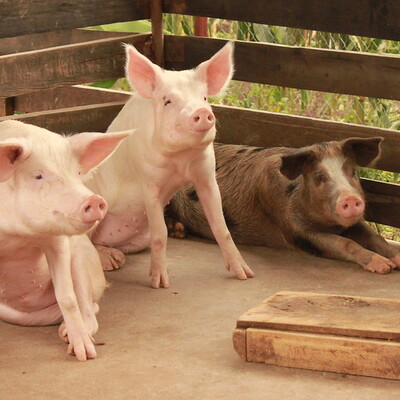
Surveillance and early-warning systems for climate-sensitive diseases in Vietnam and Laos (Pestforecast)
The Mekong is a hotspot for human, animal and plant disease, and some of the most important are highly sensitive to climate and climate changes. These diseases impose enormous burdens on human health and the agricultural sector and hinder broader development. Better tackling climate-sensitive disease requires better information and tools. We identify a portfolio of climate-based information systems that target important diseases and adapt them for Vietnam and Laos.
A warmer, wetter world is likely to be sicker. The Mekong is a hotspot for human, animal and plant disease, and some of the most important are highly sensitive to climate and climate changes. These diseases impose enormous burdens on human health and the agricultural sector and hinder broader development. Better tackling climate-sensitive disease requires better information and tools. We identify a portfolio of climate-based information systems that target important diseases and are used successfully in other countries. We propose action research to adapt them for Vietnam/Laos and ensuring delivery through partnerships. The outcome is farming communities are able to take practical action to reduce disease risk and/or benefit from risk-mitigating action by health providers. The impacts are better health, reduced economic loss from disease, increased food security and ecosystems protected from disease spillover and misuse of agricultural chemicals.
The research portfolio consists of surveillance and early-warning systems successfully used elsewhere targeted to important climate-sensitive diseases in Vietnam and Laos. We will build capacity in using these systems through existing partnerships ensuring outcomes. These include the following:
- The national task force on food safety in Vietnam, supported by ILRI, will use hotspot maps for targeting surveillance and use of climate-based tools in its training and sensitization, in particular on leptospirosis and Japanese encephalitis.
- Rubber farmers in Laos will get mobile climate forecast and advice messages based on information from 20 sets of auto-meteorological stations pledged by the National Climate Center in China that will also provide capacity building and training in their use.
- Thousands of health officers and farmers trained by a World Bank-funded project in disease surveillance/reporting in Vietnam will form the core of the participatory disease surveillance and response system. They will send information and receive advice on climate-sensitive disease from model predictions and global platforms. In Laos, the network of primary animal health workers trained by Veterinarians without Borders will play a similar role.
- Unlike other tools, mycotoxin forecasting has so far only been used in developed countries. While adapting the tool we will explore delivery and outcome pathways with our partners.
Project activities
- Developing and disseminating maps of hotspots of climate-sensitive animal and zoonotic diseases and Vietnam and Laos.
- Developing and piloting a real-time prediction system for Japanese encephalitis and leptospirosis in people and animals in Vietnam and Laos.
- Exploring the potential for weather-based forecasting for aflatoxin mitigation.
- Climate service and early warning system for rubber plantations in northern Laos.
- Dissemination and application of developed tools of pest forecast.



















